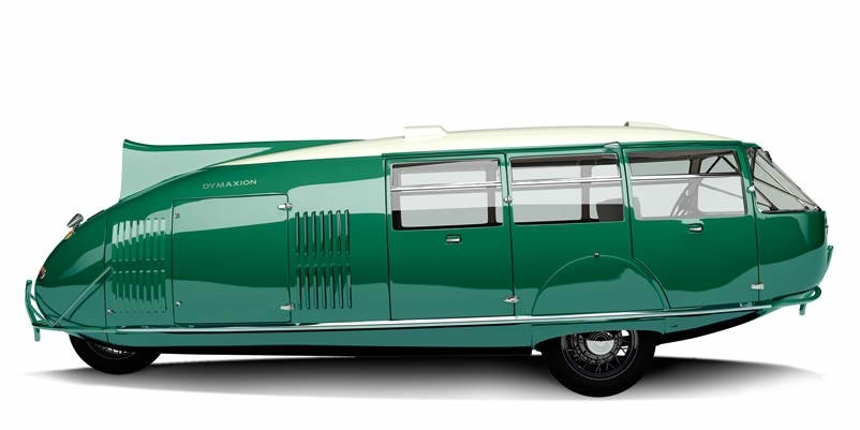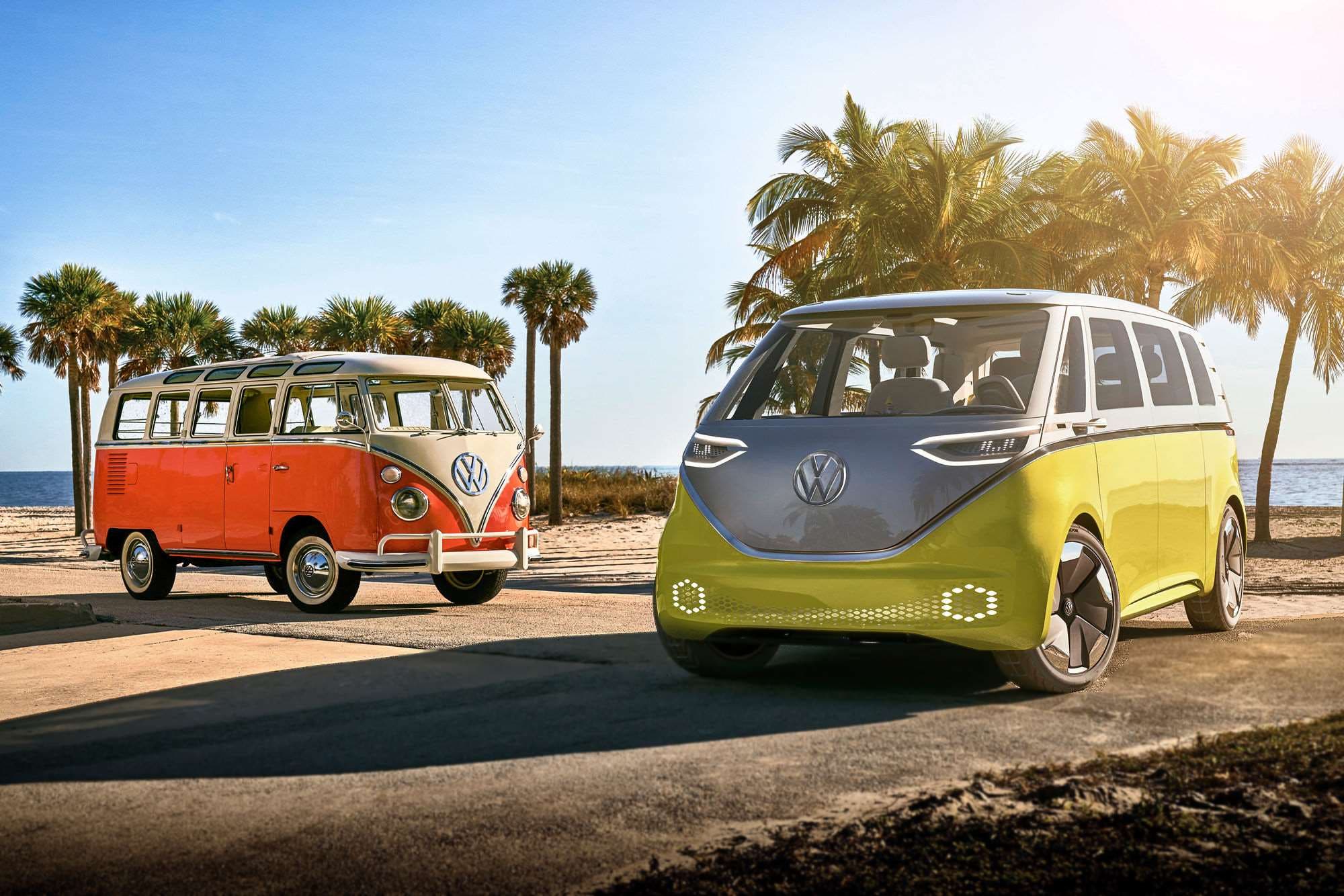Apple Car Resembled Volkswagen ID.Buzz & Canoo Lifestyle Designs

Sign up for daily news updates from CleanTechnica on email. Or follow us on Google News!
Now that Apple has officially ended its Project Titan electric car program (at least until it decides to revive it some time in the future), details about what went on and what went wrong inside the cloistered halls of Apple headquarters in Cupertino, California, are beginning to emerge.
Bloomberg News correspondent Mark Gurman has been made privy to some of those details and they describe a series of dubious decisions, and course reversals that seem contrary to the public image of Apple as a modern day tech juggernaut that has all the answers to all the questions about the future of digital technology.
Gurman says the Apple car was a case study in what happens when corporate indecision, technological challenges, and market realities combine — a wasted opportunity that set back the company’s future. Beginning in 2014, Apple developed a plan that would diversify revenue and chart a future beyond the iPhone in one full swoop: an electric vehicle.
There were two main schools of thought about how to proceed:
A. Build an electric vehicle with autonomy features similar to what Tesla was doing. That meant a car that could drive itself on freeways and some roads, but not everywhere.
B. Change the world with a full-blown self-driving vehicle capable of taking passengers from point A to point B with zero intervention from a driver. Oh, and while doing all that, make it look like nothing seen before.
Apple & The Road Not Taken
Apple picked the second approach, a decision that meant the project was doomed from the start. Back then, everyone thought self-driving cars were just around the corner, metaphorically speaking. Elon Musk was the primary promoter of autonomous cars, but many other automakers were hooked on the idea. Why?
Money, gentle reader. At around that time, a Volvo engineer, in an unguarded moment, bragged that self-driving cars would be a license to print money for manufacturers. Why sell a car once when you could profit every day from selling subscription services that would allow cars to drive themselves? People would surely be willing to pay for such convenience.
Gurman says Apple was feeling pretty cocky in 2014. It had just upended the cellphone, tablet, and music industries. It was about to launch the Apple Watch, which it thought would crush the Swiss watch market. Apple wanted to do the same thing for cars.
With that in mind, Apple decided its car, in addition to offering advanced levels of autonomy, would break new ground when it came to what a car should look like. It could be a showcase for its vaunted Jony Ivy-inspired design language and be fully integrated into its ecosystem of products, which meant it would be hugely profitable for Apple.
CleanTechnica readers will recall the tussle between Elon Musk and Tim Cook back in those days before production hell and cheap cars from China were just clouds on a distant horizon. Elon once crowed that Apple was where former Tesla engineers went to die. Then in the dark days when it seemed like Tesla might not survive, Tim Cook refused to take Elon’s phone calls when Musk was frantically trying to find a buyer for Tesla.
Business is not always about the triple net bottom line. Often it is just a good old fashioned game of King of the Mountain, or what a friend of mine refers to slyly as a “d*ck measuring contest.”
When the decision was first made to pursue an Apple car, it seemed like the automotive market would be the next battleground for Silicon Valley, especially in the area of autonomous cars. It was also clear that cars were essentially becoming computers on wheels.
The world of personal transportation seemed like a category ripe for disruption, one that could be transformed with a smartly packaged combination of hardware, software, and services. The company could design the coolest looking car on the road, develop its own underlying operating system, and sell services on top of it — services like self-driving features, Apple Music, and TV+ video streaming.
By the time Apple realized its mistake a few years ago, it was too late, Gurman says. All the design work had focused on a car meant to have no steering wheel or pedals. The company also had sunk billions of dollars into developing a Level 5 self-driving system. The die was cast.
A source inside Apple told Gurman it was as if Apple had tried to skip all the early iPhone models and jump right to the iPhone X. Instead of just planting a flag in the ground with a good car featuring an Apple user interface, slick Jony Ive-designed interior and exterior, and an iPhone-like buying experience, the company bet everything on the wrong horse — autonomy.
Indecision In High Places At Apple
Project Titan, the code name Apple choose for its iCar venture, was beset by indecision and disagreement and technological challenges from the start. And that was before the cold hard realities of what it takes to actually manufacture automobiles kicked in.
Tim Cook and other executives disagreed on what strategy to pursue, including whether to build a car at all, but also on minutia like what gee-whiz gizmos should be included in the car’s interior. A major point of contention was what level of autonomy to give the car. The scale ranges from 0 to 5, and Apple’s goals shifted several times throughout the project. At the same time, prospects for the overall EV market dimmed.
Against that backdrop, scrapping Apple’s car project wasn’t a mistake, especially since it frees up resources to focus on new generative AI features. But it’s still a massive disappointment that will alter the course of the company’s history, perhaps for decades to come.
A Dymaxion For The 21st Century

According to sources, the Apple car design in 2020 resembled the Canoo Lifestyle Vehicle — a futuristic van with rounded edges that reminds many people of the ill fated but groundbreaking Dymaxion created by Buckminster Fuller — the inventor of the geodesic dome — in 1933. Unlike the Canoo, the Apple concept had dark black windows with an adjustable tint. There was an all glass sunroof, a pure white exterior, and whitewall tires with a black center. The front and back were identical, so it would always look like you were driving forward. It looked like no other mass-produced vehicle — and was optimized for full, Level 5 self-driving.

Though the car’s interior changed several times, the general idea was a minimalist interface, combined with seats you’d normally see on a private jet or a limousine. Inside, it felt like you were essentially in a “contoured bubble,” the sources said. This version of the car could comfortably accommodate four people with the seats being able to convert from being normal chairs to recliners complete with foot rests.
Many of the interior designs included a giant TV in the center to show videos and handle FaceTime. Other variations added iPad-sized displays suspended from the roof to access frequent controls. Apple even went as far as devising a special air conditioning system that would push the flow of air along the sides of the cabin like airplanes do rather than being projected into the faces of the passengers.
An early design created by the legendary Jony Ive looked like a modern reincarnation of the original Volkswagen microbus — which itself bears more than a passing resemblance to the Buckminster Fuller Dymaion. That concept was known internally as the Bread Loaf. The second concept design looked nearly identical to the 2017 Volkswagen ID.Buzz prototype.

That design was shown off inside Apple well before VW ever announced its concept, and that may not be a coincidence. Gurman says some employees left the Apple car group for the German automaker in the mid-2010s. A third variation of the Apple car kept the same overall design, but had a far more dramatic front — like a wedge pointed downward.
The fourth version was the model that looked more like the Canoo and brought fresh excitement to the project in 2020. Cook and Chief Operating Officer Jeff Williams were so impressed with the design that they gave a speech at Apple’s test track in Arizona and committed to push headlong into development.
The car’s last major design, which was still a variation on the original Bread Loaf idea, swapped the van-like sliding doors for rear doors similar to the falcon wing doors featured on the Tesla Model X. Even more so than with prior iterations, it wasn’t designed for a traditional driver. It featured a front and back with such dramatic pinched curves that there was little room for front or rear windows.
When Apple ultimately decided to switch from Level 5 autonomy to something more like Level 2, it needed to add back a steering wheel and pedals as well as front and back windows. By the end, the car had two seats facing forward that could swivel, something that was extremely popular in the vans Detroit manufactured in the 70s.
The Takeaway
My old Irish grandmother might say that Apple was too clever by half. The Apple car project was driven partly by ego — the desire to beat Elon Musk and Tesla to the goal of manufacturing an automobile that could drive itself. As mentioned above, that goal is mostly about generating revenue for corporations. The allure of all those profits have blinded many corporations to the main goal of the EV revolution — getting millions of electric cars on the road so emissions from driving are substantially reduced.
If Apple wants to get into the car business, it could buy an existing company like Rivian or Canoo or form a partnership with an automaker the way Sony has done with Honda. It has enough cash on hand to buy just about any company it wants, including Tesla.
Apple made a decision to pursue autonomous cars a decade ago. As Robert Frost wrote in a poem more than a century ago, Apple decided to take the road less traveled by, and that has made all the difference.

Chip in a few dollars a month to help support independent cleantech coverage that helps to accelerate the cleantech revolution!
Have a tip for CleanTechnica? Want to advertise? Want to suggest a guest for our CleanTech Talk podcast? Contact us here.
Sign up for our daily newsletter for 15 new cleantech stories a day. Or sign up for our weekly one if daily is too frequent.
CleanTechnica uses affiliate links. See our policy here.
CleanTechnica's Comment Policy

